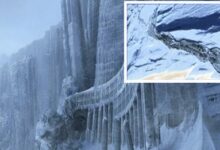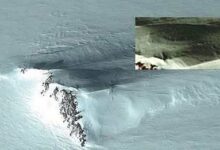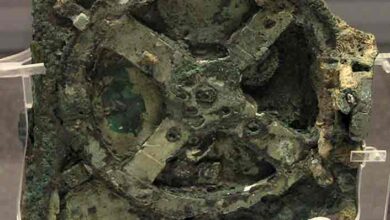A 12,500-year-old sphinx discovered in Pakistan (Video)
In contemporary Pakistan, the Balochistan Sphinx, also known as the Lion of Balochistan, is a rare and peculiar sight. This uniquely-shaped structure can be found in Lesbela, Pakistan, and shares certain features with the famous Egyptian Sphinx in Giza.
While some argue that the Balochistan Sphinx’s resemblance to the ancient Sphinx suggests the existence of lost cultures predating well-known civilizations like the Egyptians, modern historians and writers continue to debate this possibility.
 Interestingly, this geological formation remained largely unknown until the Makran Coastal Highway opened in 2004, providing access to the area for travelers. This highway connects Karachi with the port town of Gwadar on the Makran coast and has brought attention to this fascinating landmark.
Interestingly, this geological formation remained largely unknown until the Makran Coastal Highway opened in 2004, providing access to the area for travelers. This highway connects Karachi with the port town of Gwadar on the Makran coast and has brought attention to this fascinating landmark.
Despite extensive archaeological research, the unusual rock formation known as the Pakistani “Sphinx” is often dismissed by experts as a natural occurrence. From various angles, the geological formation appears to bear some resemblance to the iconic Egyptian Sphinx, a masterpiece believed to have been chiseled out of a single massive block of limestone over 4,500 years ago during the reign of Khafre. Khafre is also renowned for constructing the second-largest pyramid on the Giza plateau.
Numerous photos of the Balochistan Sphinx, situated in Hingol National Park, do little to clarify its origins, causing more perplexity than illumination. Some individuals may find it difficult to accept that natural forces could have fashioned such an intricate and distinctive geological feature. To some, the location where the oddly-shaped formation stands appears as if it were created by human hands long ago.
Upon first glance at the “Sphinx,” one may observe a well-defined jawline, with prominent facial features such as eyes, mouth, and nose that are perfectly spaced, seemingly carved in proportion to one another. However, this is not sufficient evidence to conclude that the Balochistan Sphinx was carved by human hands rather than formed by natural processes. The psychological phenomenon of pareidolia may be at play, causing us to perceive familiar shapes and patterns where none exist.
 Furthermore, identifying a rock formation in the middle of nowhere as a monument or the result of human intervention based solely on visual cues is not a reliable method. A thorough archaeological survey is necessary to determine whether the unusual geological shape was created by ancient civilizations or the forces of weathering and erosion.
Furthermore, identifying a rock formation in the middle of nowhere as a monument or the result of human intervention based solely on visual cues is not a reliable method. A thorough archaeological survey is necessary to determine whether the unusual geological shape was created by ancient civilizations or the forces of weathering and erosion.
Over the years, the enigmatic formation known as the Balochistan Sphinx has elicited differing viewpoints as to its origin. While some have argued that it is a natural occurrence, others contend that it is a product of human craftsmanship. The debate continues to rage on.
Bibhu Dev Misra, an author and blogger, is among those who assert that the Balochistan Sphinx is not a random geological formation but is instead a component of a vast architectural complex. According to Misra, the Sphinx is surrounded by the ruins of ancient temples that were meticulously carved into the bedrock.
Misra goes on to describe the Sphinx in detail, pointing out its distinct features such as a well-defined jawline and clearly discernible facial features, including eyes, nose, and mouth. These features, he notes, appear to be perfectly proportioned to one another, lending further credence to the idea that the Sphinx was created intentionally rather than by natural forces.
But if it really is a manmade monument, who carved it and when was it carved?
It’s quite surprising that the geological formation in Pakistan, similar to the ancient Egyptian Sphinx, also appears to have a headdress referred to as Nemes. However, it’s important to consider that this observation could be a result of pareidolia, where our mind connects familiar shapes and patterns to form an image.
Apart from the headdress, Bibhu Dev Misra suggests that the symmetrical features surrounding the supposed Sphinx provide evidence of human intervention, contradicting the idea that natural weathering formed the site.
The argument presented is that the Balochistan Sphinx displays a clear symmetrical pattern of steps and pillars, providing further evidence to support the notion that it was created by human hands rather than by natural forces.
According to the author, the steps are evenly spaced and consistent in height, creating the impression of a majestic, rock-hewn architectural complex.
Despite various claims and conjecture that the Sphinx could be as old as 12,000 years, its true age remains unknown. This is because the authenticity of the Sphinx itself cannot be confirmed.
Without extensive archaeological fieldwork and excavation, it is impossible to determine whether the Balochistan Sphinx was indeed sculpted by a forgotten civilization as some speculate or if it is simply another geological formation shaped by weathering and other natural processes.




